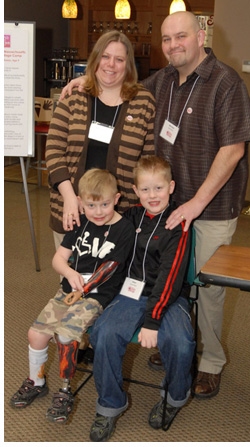Advocates worried about changes to autism diagnosis criteria
by Beth Finke
A recent article in the Detroit Free Press quotes Dr. Patricia Wright, our National Director of Autism Services here at Easter Seals. The article covered the proposed changes to the criteria for diagnosing autism and the concerns around shrinking eligibility to receive services. It explains that a committee appointed by the American Psychiatric Association has recommended defining several levels of autism as a single new category called autism spectrum disorder:
The new guidelines would require clearer assessment of a person’s overall developmental status, including social communication and other cognitive and motor behaviors.
But some worry that the new standards would mean those with the least severe forms of autism may no longer fall within the newly defined spectrum. Those with Asperger’s disorder, for example, have deficits in social skills but not thinking and reasoning abilities. Because some are higher functioning, advocates worry they may no longer fit the criteria.
Dr. Wright points out that those of us who advocate for people with disabilities push for broader definitions of conditions to ensure that everybody who needs services can access them. “But our society has a need for labels,” she says. “And we use it to decide who can and cannot access services.”
The article also quotes Dr. Walter Kaufmann, the director of the Center for Genetic Disorders of Cognition and Behavior at Kennedy Krieger Institute in Baltimore. Kaufmann helped develop the proposed new guidelines and sees them as a potential help. “Rather than cutting off services for some, the changes might better define where patients fit along the wide autism spectrum and whether their main problem is in social interaction. And that would mean more targeted, more effective interventions,” he said.
Guess we’ll have to wait until the guidelines are implemented to see the true impact on services.







 Snowy weather isn’t the only winter tradition up and down the East Coast — so is Friendly’s Cones for Kids! This is
Snowy weather isn’t the only winter tradition up and down the East Coast — so is Friendly’s Cones for Kids! This is